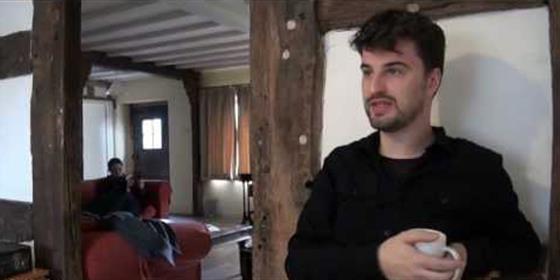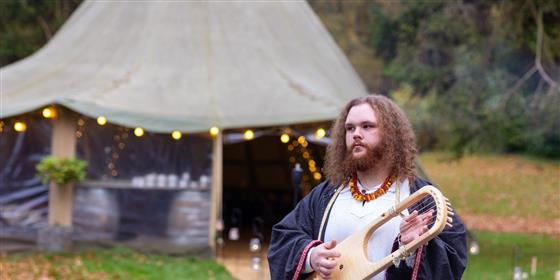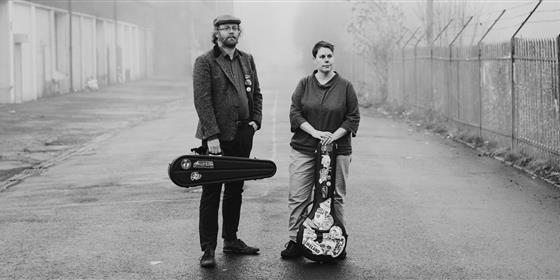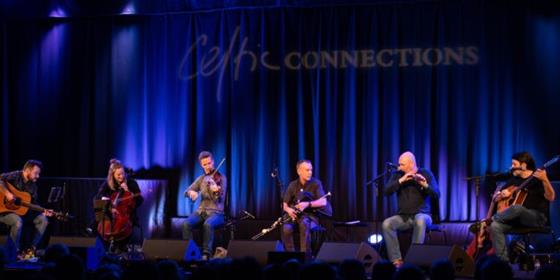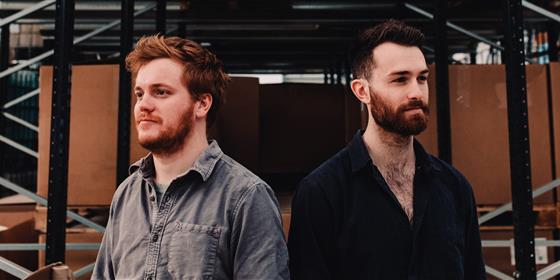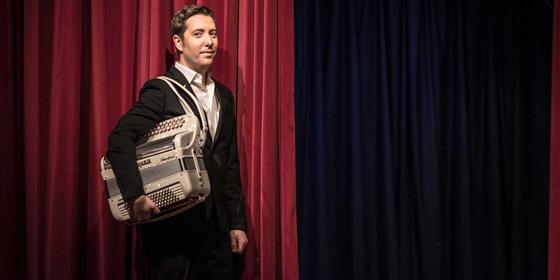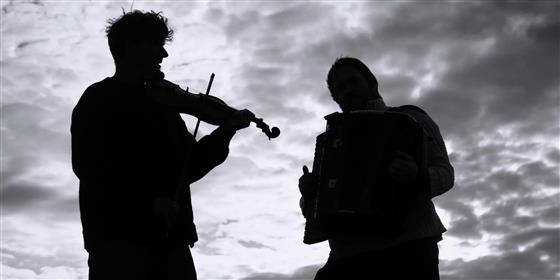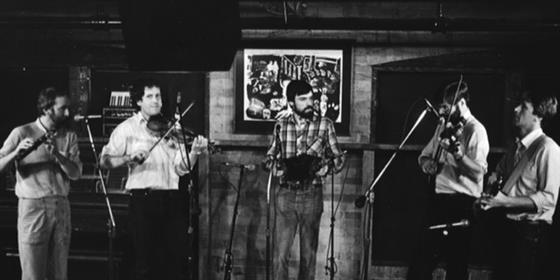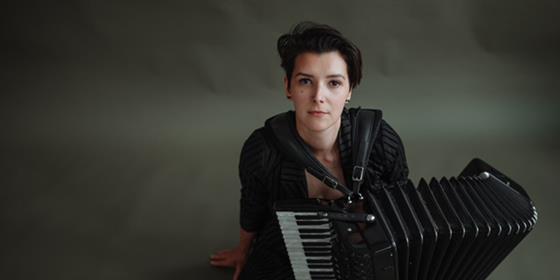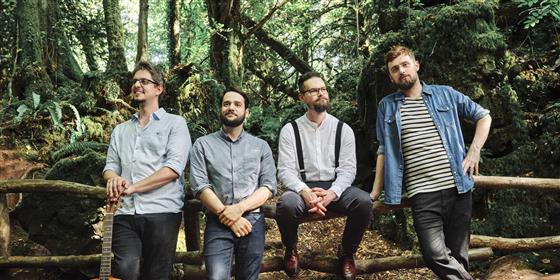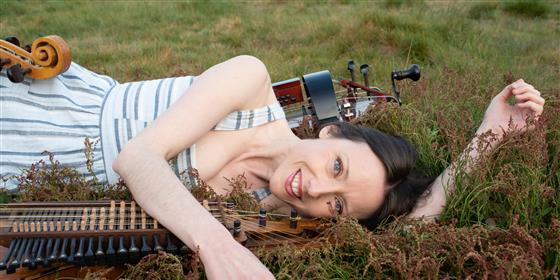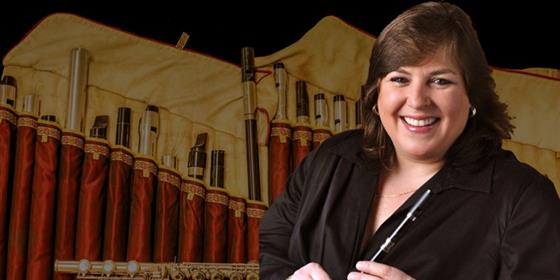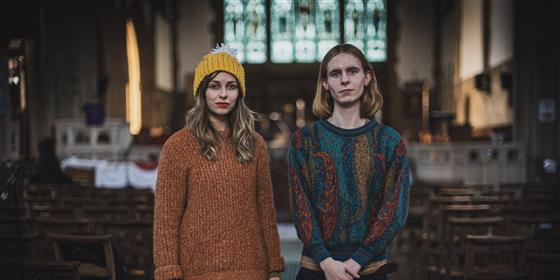Posted by Michele Mele 08 October 2023
German fiddler Gudrun Walther and English melodeon star Andy Cutting met for the first time almost three decades ago, but their collaboration has gained new momentum in recent years. These two highly skilled musicians are releasing Conversations, their first album together, a fascinating exploration of their musicianship and a rich collection of both traditional and more modern tunes.
They have been so kind as to answer a few questions for Bright Young Folk readers.
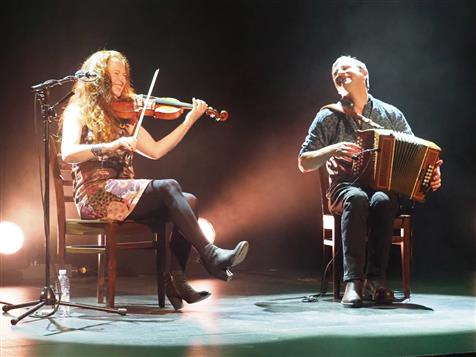
How did you pick up your instruments?
Gudrun: I grew up in a musical family. My great-granddad on my dad’s side was a musician - he played the fiddle and trumpet for dances, weddings and funerals. He owned the fiddle that I am playing today.
My great-granddad on my mum’s side played the button box.
Both my parents played fiddle, and my older brother plays the accordion. He started playing Irish music when he was 17. I’m 12 years younger than him, so at the age of five, I got in touch with Irish music, in addition to the German folk songs my mum was singing to me at bedtime, and the other music that was played in the house.
I started to scratch polkas on a wee fiddle that my dad was giving me lessons on. At the age of 7, I entered a “proper” music school and got classical training, but by that time I had already been learning trad music by ear, so that’s always been my first love.
Andy: In their early 20s my parents would regularly go to various folk clubs in London but when they started a family this stopped for a few years. Then when I was four years old my dad started dancing with Herga Morris. This was closely followed by my mum dancing with (womens’ North West Morris side) Flowers of May. For the next few years my older brother and I would be taken (on most weekends) to various Morris events in the south of England.
My brother was learning the violin and I was encouraged to play the snare drum. I went on to have drum lessons and ended up playing for various bands and local theatre shows. Just before my 16th birthday a friend gave me his old and slightly knackered one row melodeon to restore.
On returning it to him, in a much more playable state he asked me to play it for him. I pointed out that it had only been back in one piece for a couple of days but I played him a couple of tunes. He was rather taken aback and said, it wasn’t fair as it had taken him several weeks to learn his first tune on the instrument.
Many years later it occurred to me that I only had to learn the mechanics of the instrument as I already had many of the Morris tunes in my head from hearing them so many times over the years.
Who were the teachers and artists that had the greatest influence on your playing?
Gudrun: Thanks to my brother, I listened to a wide selection of bands from a very young age. De Dannan was an early favourite, listening to Frankie Gavin pretty much defined “Irish fiddle” for me as a kid. Altan, too, right from the very first duo recording of Frankie and Mairead. The Bothy Band, Planxty, Dervish and Solas defined for me what a "trad band” is.
In terms of solo fiddle players, I would quote Tommy Peoples, Martin Hayes and Liz Carroll as very influential. When I was about 16, I also got into Breton music and Pennoú Skoulm and Skolvan became a very important influence, especially the playing of fiddlers Jacky Molard and Fanch Landreau.
In terms of teachers - apart from taking classical violin lessons, I visited some workshops in Ireland and Britanny, but mostly I just listened to recordings and would try to imitate what I was hearing. Like a musical magpie, I was collecting lots of shiny bits from everywhere!
Andy: I am completely self taught, however all my learning has been done by listening to players whose playing I’d been drawn to. Initially it was the playing of Bruce Warburton and Ian Dedic, then John Kirkpatrick.
In the first few months of playing the box Ian gave me a couple of cassettes of European box players, Marc Perrone and Riccardo Tesi. Their way of playing was so different to the English style but really spoke to me which is why I started to change the way I was playing.
I was also influenced by the band Blowzabella and their box player Dave Roberts (a real one off player).
How did you meet? And how did your collaboration start?
Gudrun: In the traditional music scene across Europe, most of the musicians know each other from playing at the same festivals over the summer. Playing in informal sessions is very much part of the tradition and a great way of getting to know each other.
We first met in the early 90s and played a memorable session in 1995, when both Chris Wood and Andy stayed at my parents’ house after playing a concert at the folk club that the family was involved in. We ended up playing tunes long after everyone else had gone to bed.
After that session we started toying with the idea of working together - but the timing wasn’t ideal and it seemed impossible to accomplish. However, we managed to stay in touch over the years and enjoyed playing music together whenever the opportunity presented itself. After a spontaneous outing on stage as a duo for the second half of a solo gig of Andy’s in Germany in December 2018, we decided to go on a tour together. The tour was booked for March 2020…
It took two full years and a lot of re-scheduling to finally hit the road in April 2022. During this tour, it became very clear that we wanted to keep working together.
So here we are - most certainly a lot older than in the 90s, but some things take time.
There was a large gap between your first meeting in the ’90s and you finally touring together in 2022. How do you feel the last three decades of your individual development as musicians have influenced your approach to working as a duo today?
Gudrun: While I’m sad that we missed out on potential decades of making music together, for me as a player and also as a person, it’s probably a good thing that it took so long. Back then I’d probably have been too excited.
The years of experience, playing live and recording with a lot of different musicians from all over the world and with various backgrounds, exploring German trad music and finding my way back to my roots definitely did me some good.
I think the main difference is, that I know now exactly what it is that we have, and to not overproduce and cover it with layers of arrangement and flashy ideas. I can now have faith in the music of just the two instruments and what we have to give as two musicians and humans who communicate through music - that might have felt like “not enough” as a young adult.
Andy: When you are a young player, you want to do everything and throw the kitchen sink at all you do. With time and a degree of maturity you learn to take more time and make space in the music you play.
So now we can relax and just play music from the heart and not force it to be played in a way that maybe the music doesn’t want to be. Also trusting each other that what feels right, is almost always right.
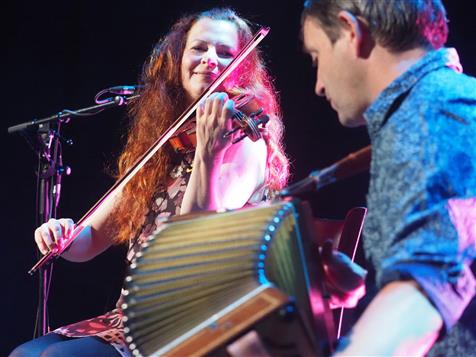
What are in your opinion the most profound similarities between the traditional tunes of Britain and Germany?
Gudrun: We share a lot of things! It starts on a basic level with the tonal system, the harmonic structure of the tunes (and songs), the dances and their rhythms…but there are also literally a lot of melodies both of songs and tunes, that exist in both traditions!
A good example of a shared tune/song on our album is the German song “Kommt ihr G’spielen” which is said to have originated in England, but has been sung in Germany since the Middle Ages! A fine example of something we don’t share are the 3/2 Hornpipes, which is why I get very excited about them, but apparently even in England the dance steps to it have been lost!
German Polonaises are closely related to Scandinavian Polskas, and again, some melodies can be found in Sweden as well as Germany. It all goes to show that Europe has been closely connected in the past, and we all share a rich cultural history.
Andy: The traditional tunes of Germany and England are very similar. They just have a slightly different flavour, which is why they sit very well together.
Everyone listening to your recordings will surely notice a special and almost instinctive approach that builds up to forge captivating harmonies. What is the creative process that leads you to create your distinctive rendition of a tune?
Gudrun: We just try to connect and listen intensely to each other and then take it from there. For most of the pieces, there is no set arrangement or plan - we just let the music develop and try to react as good as we can to each other’s dynamics and explorations of a tune.
We like to think of music as a language, spoken in many different dialects. Meeting someone who speaks the same dialect, who uses phrasing, dynamics, harmonies and rhythm in the same way, is a great gift.
To be able to have a real conversation, there is more that’s needed though - listening is as important as saying something, and being able to react spontaneously to what is being said requires all the technical aspects of playing an instrument to be accessible, but not the main focus. Having such a conversation is the most satisfying and rewarding experience for anyone playing music. If the listener is drawn in and touched by that, we’ve come full circle.
It is indeed a very instinctive approach and if possible, we try to bypass the part of the brain that “thinks”, because that can get in the way.
What are your plans for the future? Any plans to perform in the UK?
Gudrun: We are going on an album launch tour of 9 concerts in Germany in October, leading up to the official release of “Conversations” on November 3rd. The album is available for pre-order from our new website www.walthercutting.com.
Our next tour is in May 2024, another 9 concerts in Germany and Belgium, and we have some concerts in the Netherlands coming up in autumn 2024 as well.
Performing in the UK would be lovely - so if anyone’s reading this who wants to help us with that, feel free to get in touch!
See all of Bright Young Folk's text interviews.